
Costa Rica in pictures: part 1 of [??]
March 19th, 2014
I'm back from vacation in Costa Rica.

And it was spectacular. It was like a two-week-long dream (from which I awoke to the cold, hard, but mainly just cold reality of Canadian winter.) The weather, the food, the scenery, the people. And the birds, oh, the birds.
Out of the hundreds of species of Costa Rican birds, I went in with a targeted wishlist of about fifty of them. I found roughly half of those--not bad for a two-week stay, and furthermore, a two-week stay without a car, which meant I was limited to the area around the resort (Pueblo Real) for much of the time. My full triplist stands tentatively at 166, of which 132 were lifers, ballooning my lifelist to a sum of 462. Many of them are owed to Johan Chaves, a guide with whom we booked two full-day birding tours, and about whom I cannot say enough good things. Dedicated, tireless, enthusiastic, warm, funny, and extremely skilled at both spotting and identifying birds. He treated my wishlist as a sort of treasure hunt, and went out of his way to tick off as many entries on it as he could.
The beauty at the top of this post, though--a Blue-Crowned Motmot--I got on my own, during a trip to Manuel Antonio park with my husband. We had been warned that MA was not so good for birds (monkeys and sloths, yes, birds, no.) And it mostly wasn't. The large, noisy crowds of tourists scared them away. But it just goes to show every rule has an exception, and the motmot was worth the price of admission alone.
It's not easy photographing or even seeing birds in a tropical forest. There's an awful lot of thick foliage and an awful lot of vertical space for them to occupy. Seldom are they motivated to come down and perch in front of you. The motmot started out pretty close. Then, while Mike was standing watching him and I was frantically pulling my camera out of my pack and screwing the lens hood on, this gorgeous bird flew towards us and perched low right beside the trail.
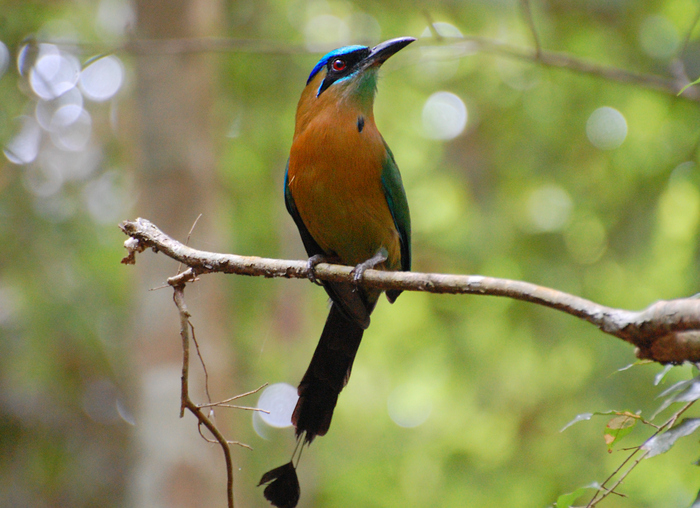
1680x1050 wallpaper
Sunset Snowy
February 22nd, 2014
I joined an OFNC outing to the Gatineau region today, looking for owls and raptors. It was mostly a bust--unsurprising really, given that February is always the cruelest month for birders and this winter has been poor in general. However, we did see plenty of this winter's celebrity, the Snowy Owls. No good, artistic close-up pics, but I thought this one cut a fine figure against the sunset.

A few more individuals. The first is an adult; the heavy black barring on the second marks it as a juvenile, born last spring, which is what we typically see here. The mature adults usually stay in the north.
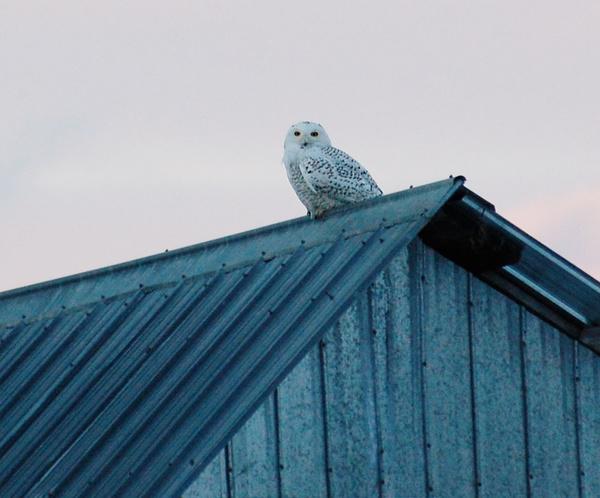
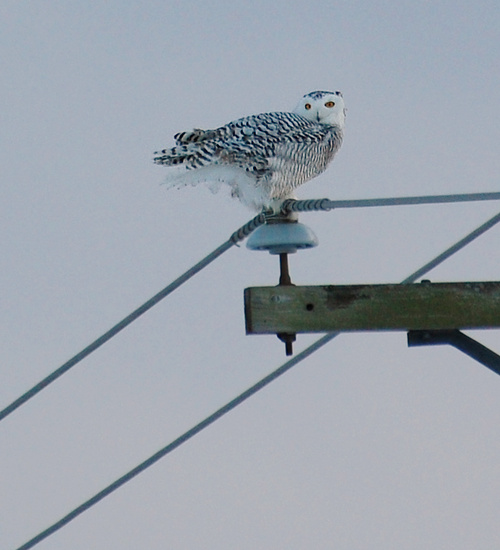
Autumn Leftovers
January 20th, 2014
It's gotten to that part of winter where I'm just tired of it. Tired of the cold, the snow, the fogged-up lenses, and the, shall we say, glacial pace of my winterlisting. So since I don't have many new pictures or stories of late, I'll fill in the gap with some leftover photos that I didn't get around to posting before.
In other news, husband and I are doing a fifteenth-anniversary vacation to Costa Rica this coming March! I'm beyond thrilled, since this will be the first chance I've ever had to bird the tropics, or indeed, anywhere outside of North America. You can expect a flurry of posts on here somewhere around late March when we get back.
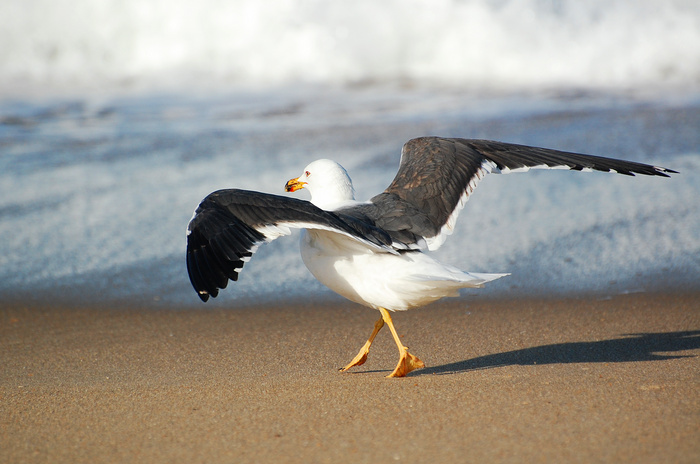
1680x1050 wallpaper
A spring leftover, actually. Lesser Black-Backed Gull photographed at Cape Hatteras.
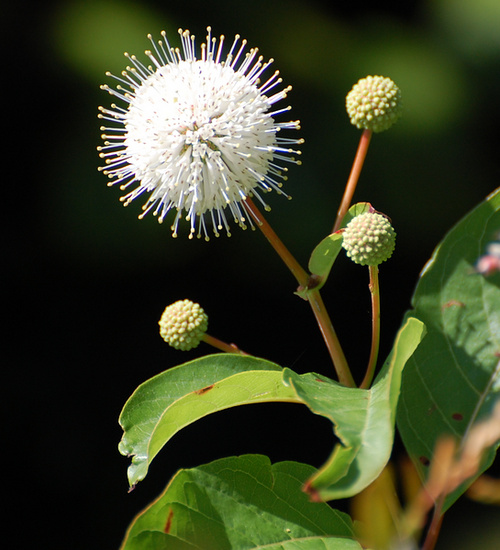
A weird wildflower called buttonbush. I found it in the Carp Ridge area.
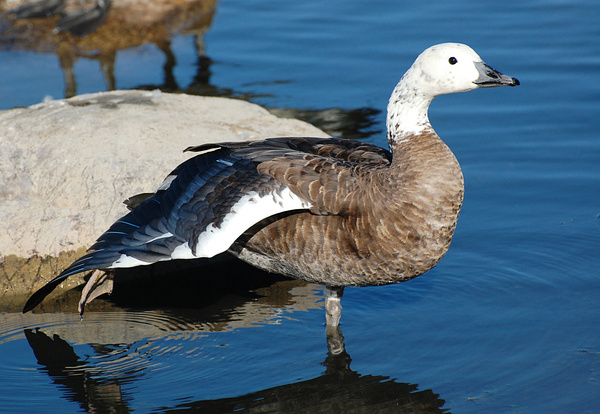
This odd goose caused a lot of discussion when he showed up at Andrew Haydon Park. Some theorized that he was some sort of domestic hybrid, others that he was just a leucistic (partial albino) Canada Goose. The final verdict was that he was probably a hybrid of a Canada Goose and a Snow Goose.
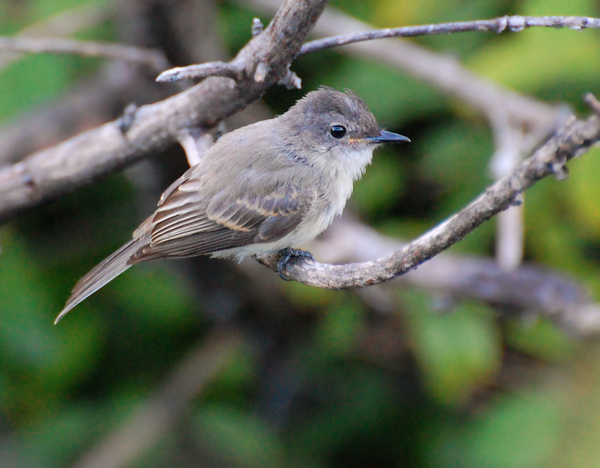
A very young (judging by the beak) Eastern Phoebe at Mud Lake. Phoebes are flycatchers that are quite adapted to human settlement and often nest on or near our buildings. They're named after their call.
On a...you know
January 6th, 2014
When I read on Gillian's blog of a tame flock of Horned Larks off Old Richmond Road, I rushed out to look for them the next day, -22C weather be damned. Larks are uncommon in our area and usually quite skittish. I've visited their small breeding population in Richmond in spring, and listened to their strange, tinkling flight songs as they spiralled up, then dove back into the field. They always kept their distance from me.
This group was, indeed, delightfully tame, seemingly unwilling to go far from the exposed grain that they were feasting on (which happened to be right next to the road.) To a ground-feeding bird in a landscape buried in snow, such a thing must be a gold mine. As I approached the flock resting on a snowy hummock, they flushed one by one--but only to go eat. I decided not to push it after that. It seemed unkind to persistently stalk birds that were already coping with so many extremes.
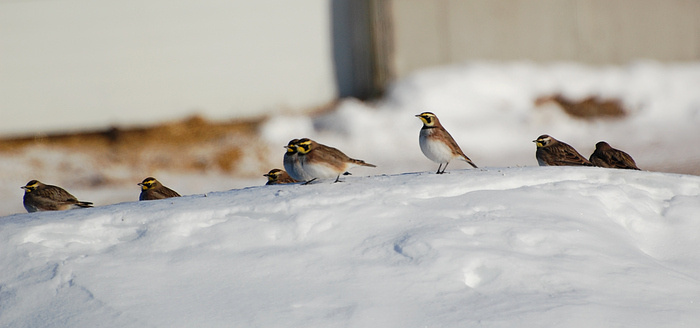
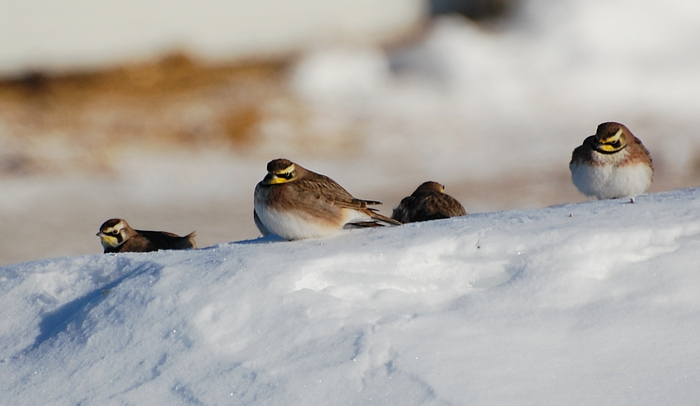

Snowy Owls Invade Ottawa
January 3rd, 2014
We're in the midst of one of the biggest Snowy Owl irruptions in history. Local experts say that hundreds of them are now in southern and eastern Ontario. One even showed up as far south as Florida recently! These arctic owls (which non-birders may recognize as Harry Potter's owl) had a very successfully breeding season in the far north, and all the newly fledged young were eating themselves out of house and home. So, as it happens with many far-northern birds when food is scarce and/or numbers swell, the excess travelled south for the winter. (Snowy Owls will happily stay in the arctic year-round if food is sufficient.) I found this one today in a field off Eagleson Road.

He allowed me just a few shots before he decided I was too close for comfort, and retreated to the top of a telephone pole.



A Mouthful Of Autumn
December 8th, 2013
A trifecta of cute rodents at Andrew Haydon Park.
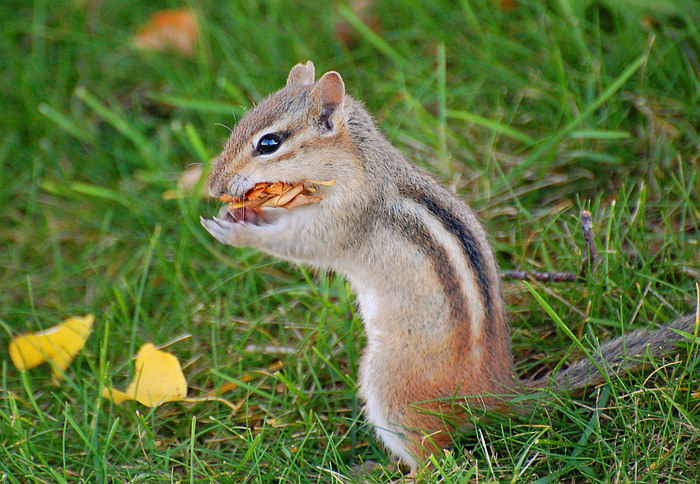
1680x1050 wallpaper
This chipmunk was gathering up fallen leaves at the park in late September, probably to line his burrow with.

1680x1050 wallpaper

1680x1050 wallpaper
Red Squirrel says "cheese"! Sometimes they actually seem to be posing for you.
Cormorant Portrait
November 3rd, 2013
This Double-Crested Cormorant lingered on the west pond at Andrew Haydon Park for weeks. I think he's finally continued on his fall migration now.
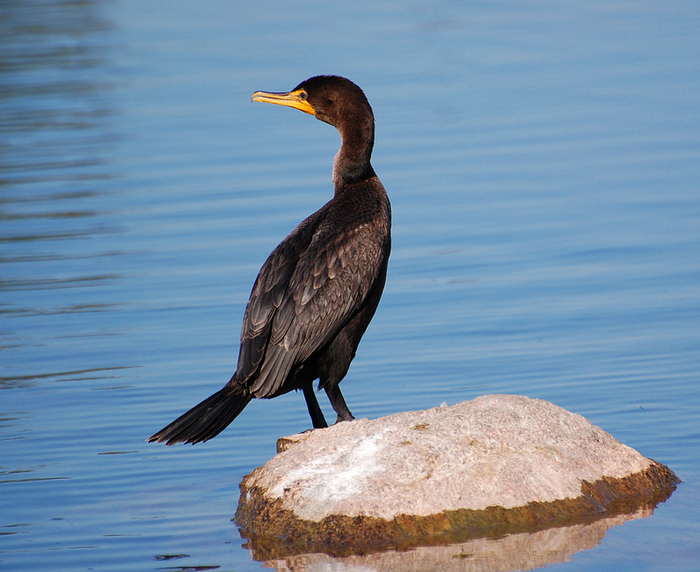
1680x1050 wallpaper
Little Devil Diver
October 31st, 2013
Great birding along the Ottawa River yesterday morning. The breeze coming off the water gave a clue as to why: it seemed the fall migrants had a tail wind!
At the rock jetty at Dick Bell Park, another photographer and I enoyed a very tame pair of Horned Grebes who swam close enough for good pictures. (The more usual way to see migrant Horned Grebes is at a great distance with a telescope.) The overcast conditions made it difficult, but I was still able to capture the one bit of color, their red eyes.
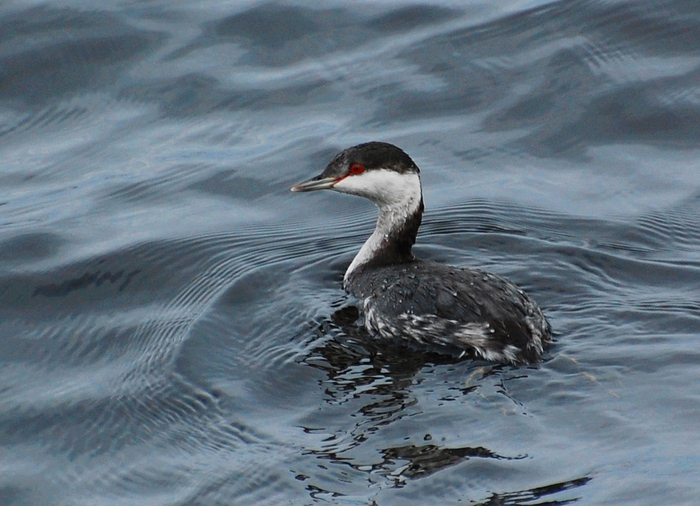
1680x1050 wallpaper
Looking at this little cutie, you might wonder why such an unassuming bird earned the folk nicknames "Devil Diver" and "Water Witch." That's because, in breeding season, the Horned Grebe's red eyes positively glow and are joined by a spectacularly wild multicolored plumage. We here in Ottawa seldom get to experience that, since most of our Horned Grebes show up in late fall. They breed in the central and western provinces.
A Feast Of Color
October 7th, 2013
For a month or two in late summer or early autumn, male ducks are in eclipse. Eclipse is a drab, female-like plumage that helps camouflage the drakes at a vulnerable time (while they're molting their flight feathers.) It's sort of a dull time for nature photographers. It's the reason why I've never posted a single picture of the handsome Blue-Winged Teal: the period of their eclipse overlaps almost perfectly with their fall migration through Ottawa, which is usually the only time I see them.
But for our local Wood Ducks, at least, eclipse is now over, and every feather of the newly-grown breeding plumage is fresh and vivid. There is no better time for appreciating the splendor of the drake Wood Duck.
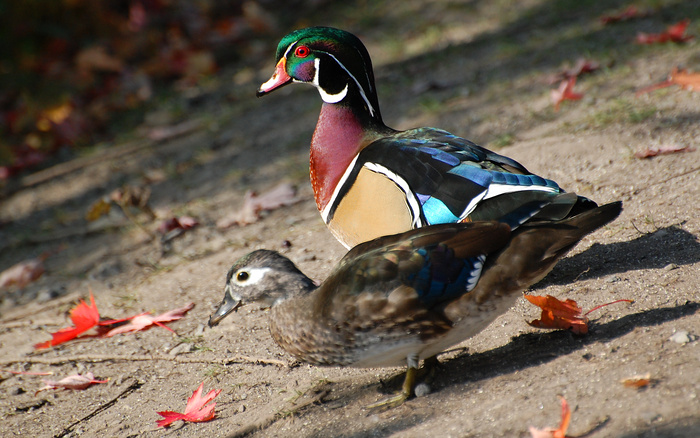
1680x1050 wallpaper
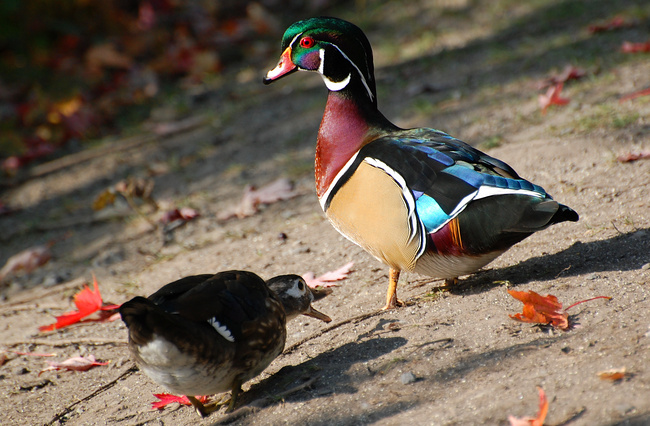
1680x1050 wallpaper
Yes dear, I think I share the sentiment.
Actually that was the beginning of an interesting bit of interaction, which I captured in five shots in quick succession. At the time I interpreted it as an aggressive encounter, but after studying the photos I don't think so. It looks more like...well, see for yourself!
( Click to continue )
Summer Insects Roundup
September 30th, 2013
A selection of interesting and/or beautiful insects I've photographed in the past couple months, before the weather turned cold.
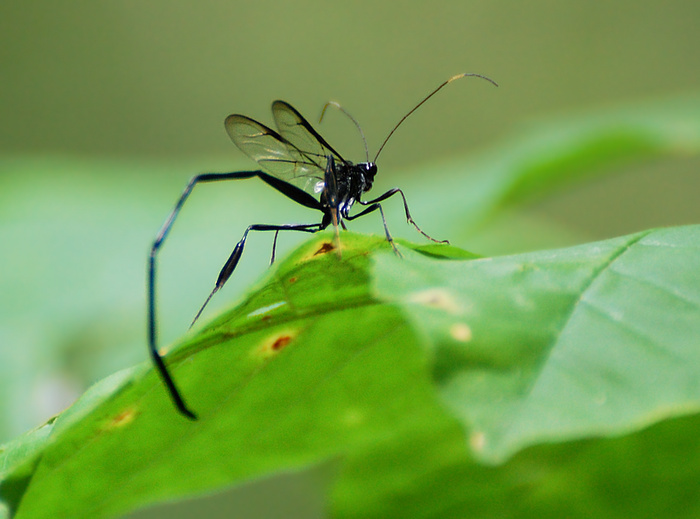
1680x1050 wallpaper
This one is as unique as it looks. It's a pelecinid wasp. It's the only species of its family in North America (of only three worldwide.) It is harmless to humans: that long scary-looking abdomen is merely an ovipositor (egg-laying appendage), not a stinger. The female uses it to penetrate well into the soil and lay her eggs on beetle larvae, which serve as food for her own larvae.
The most unusual thing about these wasps is that males are extremely rare. Reproduction is usually by parthenogenesis. That is, the females clone themselves.
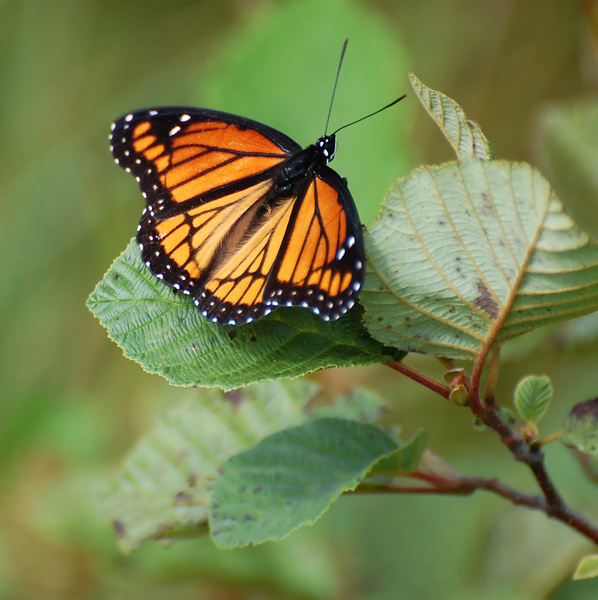
1680x1050 wallpaper
When this Viceroy made an appearance, every other color in sight seemed muted.
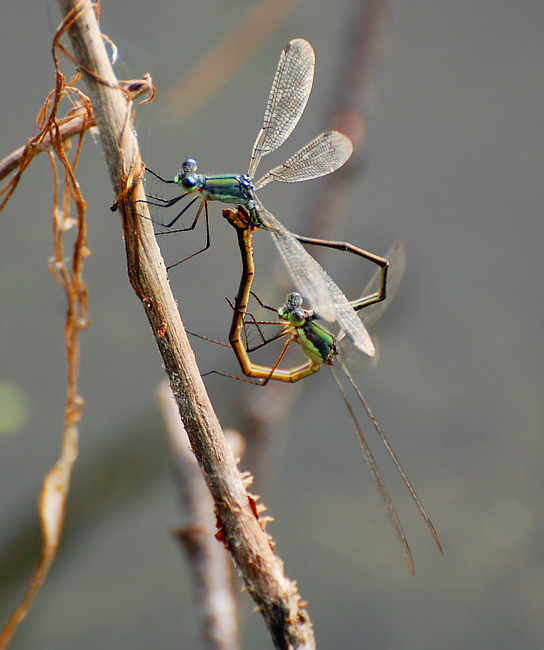
I love it when mating damselflies make a heart out of their bodies.
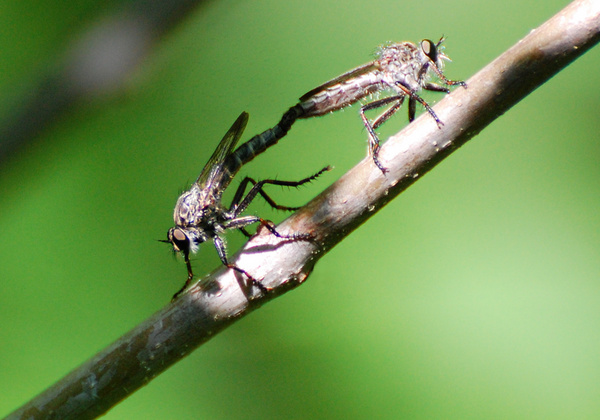
Mating Robber Flies. While we usually think of flies as detrivores or parasites, robber flies, also called assassin flies, are full-blown predators, with a lifestyle similar to odonates.
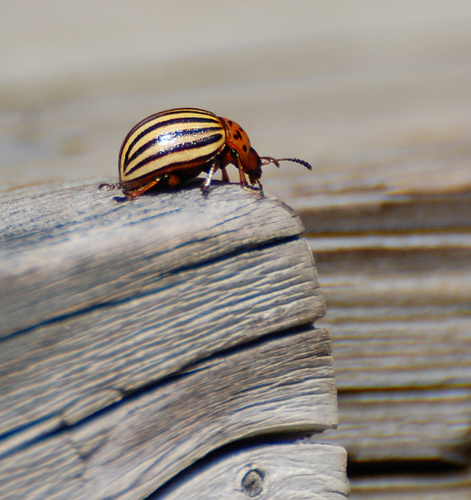
This fellow crawled by near the stream at Sugarbush Loop where I was photographing jewelwings. I found him cute and wondered if he was related to ladybugs. Turns out he's a Colorado Potato Beetle, a major pest on potato and related crops.
Oh well. He's cute anyway!
|
